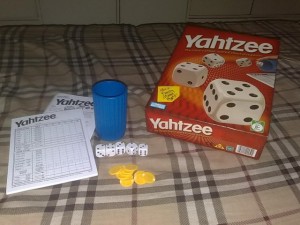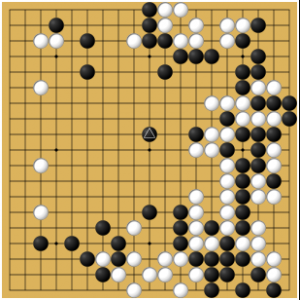Is “rationality” a measurable quantity?
In a previous blog post, I discussed some common logical errors that often arise in political discourse. This led to a rather interesting discussion on Twitter about political behaviors and how to model them mathematically (special thanks to @mathguide and @nesa_k!). One of the questions that came up this this discussion was how to define “rational behavior” and whether or not this is a measurable quantity. What follows is my hypothesis on “rational behavior”: what it is and how to measure it.
Please keep in mind that this is just a hypothesis and I don’t quite have the resources to verify these claims experimentally. If anyone has evidence to support or dispute these claims, I would certainly be interested in hearing it!
Defining “rational behavior”
Before we can begin to measure “rationality”, we must first define what it means to be “rational”. Merriam-Webster defines “rational” as “relating to, based on, or agreeable to reason”. The Online Etymology Dictionary describes the roots of the word in the Latin rationalis, meaning “of or belonging to reason, reasonable”, and ratio, meaning “reckoning, calculation, reason”. It’s also worthwhile to mention that ratio and rational have a distinct mathematical definition referring to the quotient of two quantities. Wikipedia suggests that this usage was based on Latin translations of λόγος (logos) in Euclid’s Elements. This same Greek word lies at the root of “logic” in English.
Based on these definitions and etymology, I think its fair to define rational behavior as “behavior based on a process of logical reasoning rather than instinct or emotion”.
Even this definition is far from perfect. In the context of game theory, “rational behavior” often defined as the process of maximizing benefits while minimizing costs. Note that by this definition, even single celled organisms like amoeba would be considered to exhibit “rational behavior”. In my opinion, this minimax-ing is a by-product of evolution by natural selection rather than evidence of “reason” as implied by the typical usage of the word “rational”.
I should also clarify what I mean by “logical reasoning” in this definition. In trying to quantitatively measure rational behavior, I propose that it makes sense to use a system of fuzzy logic rather than Boolean logic. By using the Zadeh operators of “NOT”, “AND”, and “OR”, we can develop an quantitative measure of rationality on a scale of 0 to 1. In logic, we say that an arguement is considered sound if it’s valid and its premises are true. Since we’re using the fuzzy “AND” in this model, the rationality measure is the minimum truth value of the logical validity and base assumptions.
Using this definition, we can also define irrational behavior as “behavior based on an invalid logical argument or false premises”. I’d like to draw a distinction here by defining arational behavior as “instinctive behaviors without rational justification”, to cover the amoeba case described above. An amoeba doesn’t use logic to justify its actions, it just instinctively responds to the stimuli around it.
Rationalism and Language
There’s an implicit assumption in the definition of “rational behavior” that I’ve used here, and that is that this requires some capacity for language. First-order predicate logic is a language, so the idea that “rational behavior” is language dependent should come as no surprise. In fact, the same Greek word “logos” from which “rational” is derived was also used as a synonym for “word” or “speech”. The components of language are necessary for constructing a formal system, by providing a set of symbols and rules of grammar for constructing statements. Add a set of axioms (assumptions) and some rules for inference, and you’ll have all the components necessary to construct a logical system.
A Dynamic Axiomatic System Model of Rational Behavior
A this point we can start to develop an axiomatic system to describe rational behavior. Using the operators of fuzzy logic and the normal rules of first-order logic we can create an axiomatic system that loosely has the properties we would expect of “rational behavior”. It’s very unlikely that the human mind uses the exact rules of fuzzy logic, but it should be “close enough”. We also have to consider that the basic beliefs or assumptions of a typical person vary over time. Thus, it’s not enough to model rational behavior as an axiomatic system alone, we must consider how that system changes over time. In other words, this is a dynamic system.
As we go through life, we “try out” different sets of beliefs and construct hypotheses about how the world works. These form the “axioms” of our “axiomatic system”. Depending on whether or not these assumptions are consistent with our experiences, we may decide to keep those axioms or reject them. When this set of assumptions contains contradictions, the result is a feeling of discomfort called cognitive dissonance. This discomfort encourages the brain to reject one of the conflicting assumptions to reach a stable equilibrium again. The dynamic system resulting from this process is what I would characterize as rational behavior.
One particularly powerful type of axiom in this system is labeling. Once a person takes a word or label and uses it to describe him or herself, the result is the attribution of large number of personal characteristics at once. The more labels a person ascribes to, the more likely it is that a contradiction will result. Labeling also has powerful social effects associated with it as well. Ingroups and outgroups can carry with them substantial rewards or risks depending on the context.
Rather than rejecting faulty axioms when confronted with cognitive dissonance, some individuals develop alternative methods of reducing the discomfort. The general term for pattern of behavior is called cognitive bias. This behavior can take a variety of different forms, but the one that is most relevant to this discussion is the confirmation bias. One of the ways in which the human brain can reduce the effects of cognitive dissonance is by filtering out information that would result in a contradiction with the base assumptions. Another relevant bias to consider is the belief bias, or the tendency to evaluate the logical validity of an argument based on a pre-existing belief about the conclusion.
Whatever form it may take, cognitive bias should be taken as evidence of “irrational behavior”. Not all cognitive biases are of equal magnitude, and some arguments may rely more highly on these biases than others. The goal here is not a Boolean “true” or “false” categorization of “rational” and “irrational”, but more of a scale like the one used by PolitiFact: True, Mostly True, Half-True, Mostly False, False, Pants on Fire. The method of applying truth values in fuzzy logic makes it highly appropriate for this purpose.
Examples in Politics
Consider this clip from The Daily Show. Using this clip may seem a little biased, but it’s important to remember that John Stewart is a comedian. Comedians have an uncanny knack for walking the fine line between “rational” and “irrational”, providing an interesting perspective to work with.
In the first example, we have the issue of Rick Santorum and JFK. After reading JFK’s speech on religious freedom, Santorum says that it made him want to throw up. In order to defend this statement, Santorum uses a good ole fashioned straw man argument by claiming that JFK was saying “no faith is not allowed in the public public square” when in fact JFK was saying “all faiths are allowed”. I think Santorum’s behavior here is a prime example of irrational behavior. Taking this position may very well earn him some votes with the deeply religious, but it’s clear that Santorum has some problems finding consistency between his personal beliefs and the First Amendment. His position is not based on a valid logical argument, but on a physical response to the cognitive dissonance resulting from his conflicting beliefs. This example also shows the power of deeply held self-labeling behaviors like religion.
Mitt Romney made some headlines with his “NASCAR Team Owner” blunder. It would appear that Mitt Romney had gone to Daytona to try and score some points with “average Americans”, but a slip of the tongue showed how out of touch he really is. To Romney’s credit, his behavior here is about half-rational. His assumptions are probably something like this:
- I want people to vote for me.
- People vote for someone they can relate to.
- Most people know someone who likes NASCAR.
- I know someone who likes NASCAR.
It makes sense from a logical standpoint, but it turns out that the person who Romney knows that likes NASCAR just happens to be a
“team owner” instead of a “fan”. This small detail makes it unlikely that people will relate to him, but at least the foundation of a logical argument is there.
This brings us back to Rick Santorum again. This time, Santorum calls President Obama a “snob” for “[wanting] every American to go to college”. Not only is this comment blatantly false, but he’s employing an ad hominem attack in lieu of a logical argument. This example draws a nice dichotomy between President Obama and Rick Santorum. The President is making a rational argument in favor of higher education which is well supported by evidence. By opposing this rational argument on a faulty premise, Santorum comes out of this situation looking mostly irrational. His behavior makes sense if you consider the effects of confirmation bias. Santorum believes that the President is trying to indoctrinate college students to become liberals. He believes it so thoroughly that he simply filters out any evidence that would contradict it. While most observers can hear the President say “one year of higher education or career training“, Santorum doesn’t. He hears the part confirms his beliefs and filters out the rest. I’d imagine that for Santorum, listening to President Obama speak sounds something like the teacher from the Peanuts cartoons: “one year of higher education wah wah-wah wah-wah-wah“. To Santorum’s credit, at least he had the mind to retract his “snob” statement — even if only partially. This shows that the underlying mechanisms for rational behavior are still there, despite his frequent leaps of logic.
Conclusion
I hope I’ve at least managed to present a definition of “rationality” that’s a little more precise than the everyday use of the term. I’m sure some people out there might disagree with the way I’ve rated the “rationality” of these behaviors. Different people have different experiences and consequently have different assumptions about the world. If we were to use multiple “rationality raters” and average the results, perhaps we might have a decent quantitative measure of rationality to work with.
Part of the problem with measuring rationality is the speculative nature of trying to determine someone else’s assumptions. We can generally use what a person says as an indication of what they believe — at least for the most part. It’s also important to consider not only the statement, but the context in which the statement is made. In political discourse, we implicitly assume that politicians are being honest with us. They might be wrong about the facts, but this idea that they are honestly representing their own views is something that voters tend to select for. Perhaps this is why Romney is still struggling against Santorum in the primary. Santorum may have problems getting his facts straight and presenting a logical argument, but he has a habit of saying what he believes regardless of the consequences. Romney, on the other hand, says what he thinks will win him the most votes. Many voters do not vote “rationally”, they vote according to how they “feel” about the candidates. Romney may be more “rational” than Santorum, but his calculated responses cause him to lose that “feeling of honesty” that Santorum elicits from voters.
In the next article, I’ll attempt to explain the origins of rational and irrational behavior. I think the key to understanding these behaviors lies in evolution by natural selection. I would argue that both rational and irrational behaviors contributed to the survival of our species, and this is why irrationality persists into the present. Stay tuned!







